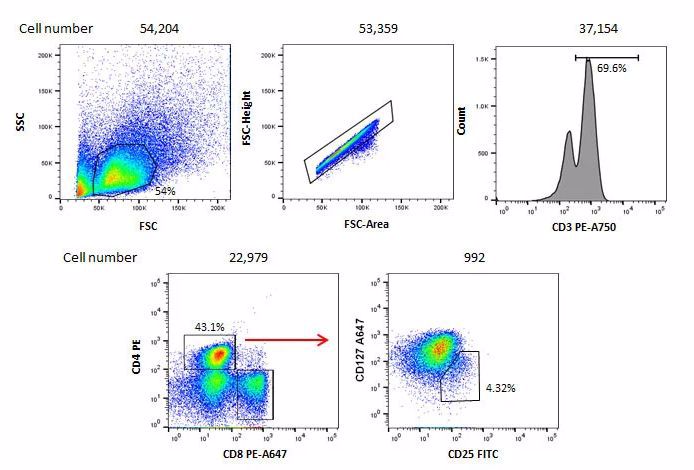Careful experimental design and planning before you stain your cells is important as it can improve your data and avoid unwanted repetition due to lack of statistical significance. There are a number of important things to consider such as sample preparation, experimental design and controls before you start the actual process of staining your cells with antibodies. Here we will discuss the importance of cell frequency in your flow cytometry experiment
Cell frequency can influence the choice of fluorophore and how many cells you will need to collect to obtain statistically significant data, crucial with rare populations. We have produced handy tables showing the relative frequency of cells in commonly used human, mouse and rat tissues, allowing you to plan and predict your flow populations.
For more information on all the other important aspects you should consider before you start your experiment, to help optimize your flow cytometry, please read the related chapter in our updated flow guide and watch our dedicated webinar.
Fig.1. Staining of human blood cells. 100,000 cells were stained with CD3 PE-A750 (MCA463P750), CD4 PE (MCA1267PE), CD8 PE-A647 (MCA1226P647), CD127 A647 (HCA145A647) and CD25 FITC (MCA2127F) to identify CD4 positive T regulatory cells. The gating strategy shows even though 100,000 cells were stained initially, after several gates have been applied, the final population only contains 992 cells.

